Vintage photos show what life was like for women 100 years ago

In the 1920s, some women's lives changed radically due to the introduction of new rights and jobs.
The 19th Amendment was ratified in August 1920, and some women voted in the November 1920 election.
Societal changes were reflected in fashion, which incorporated shorter, looser skirts and dresses.
The 1920s brought huge changes for women. During World War I, they proved they could handle the jobs left by men who'd gone to war; the right to vote helped solidify some women's new position in society; and the fashion pendulum swung away from constricting corsets and bustles toward shorter, looser dresses and skirts.
However, despite this period of immense change, American beliefs surrounding race remained firmly rooted in the past. Black, Asian, Latina, and Indigenous women were still subjected to overt racism, violence, and prejudicial lawmaking that hindered — and even barred — their access to the rights and privileges afforded to many white women.
Before the Great Depression hit, it was also a time of great prosperity, but only for a select few: In 1928, the highest 1% of families earned almost a quarter of all pretax income, according to the Pew Research Center. Thus, the Roaring Twenties were marked by the juxtaposition of the glitz and glamour of Gatsby's New York City and the harsh realities often overlooked throughout history.
These photos show what life was like for women in the 1920s.
The 19th Amendment, which gave women the right to vote, was passed over 100 years ago — although it would be many decades before all women could vote.

The women's rights movement reached a national scale after the 1848 Seneca Falls Convention, in which leaders Elizabeth Cady Stanton and Lucretia Mott spoke on the need for women's suffrage.
When the 19th Amendment was ratified in August 1920, it largely benefited white women.
Voter intimidation and discriminatory policies kept many Black women from the polls. The government also often denied Native American and Asian-American women citizenship, so they were also unable to vote. It wasn't until the Voting Rights Act of 1965 and voting rights amendments in 1975 that some Black women and other women of color were finally able to cast their ballots.
The 19th Amendment's passage was the result of nearly 100 years of protests.

Women protested for their right to vote for nearly a century before the amendment was finally passed in 1920.
Those who protested faced arrest, jail time, and harassment in their efforts to secure women's rights.
These were some of the first women to cast their ballots, just a few months after it became legal in 1920.
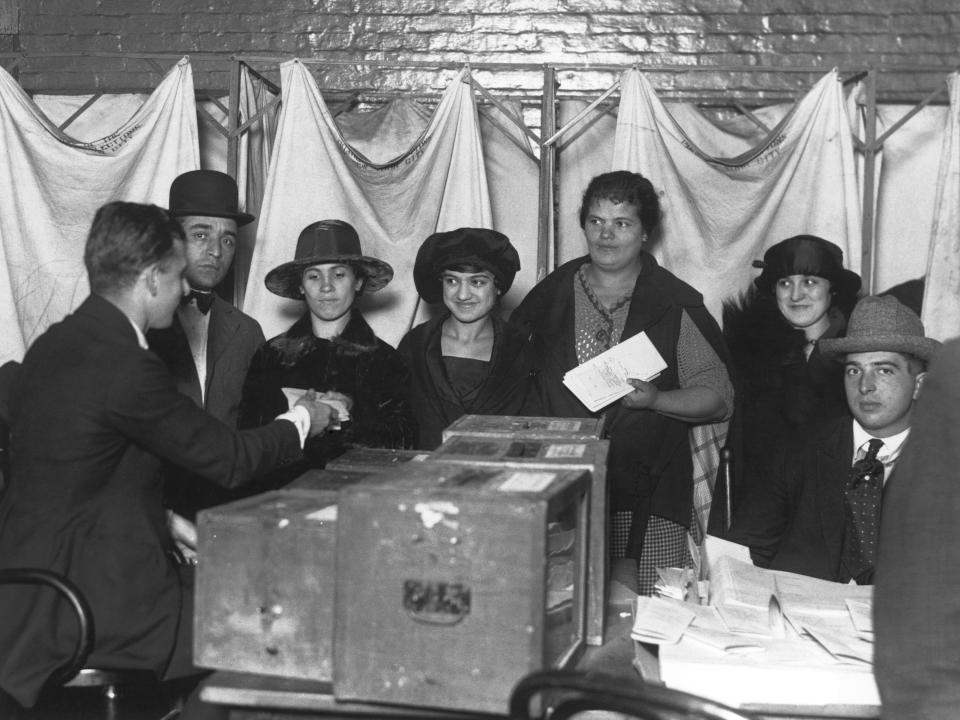
They voted in the election for either Warren G. Harding and Calvin Coolidge on the Republican ticket or James Cox and Franklin Delano Roosevelt on the Democratic ticket. Harding won by a landslide and became president in 1921.
Women in London also protested for their right to vote.

Women's suffrage in Great Britain was put into law differently than in the United States, The Independent reported. The country saw two stages of granting women the right to vote: the 1918 declaration of suffrage for women, and then the declaration of full suffrage for women in 1928.
The 1918 declaration was highly exclusionary, only allowing women over the age of 30 who were married to members of their local government register.
It was only in 1928 that women were granted equal voting rights to men, allowing women over the age of 21 to cast a ballot.
Women both supported and protested Prohibition 100 years ago.

Though the Women's Christian Temperance Union was behind the movement that sparked Prohibition, there were also women against the alcohol ban. Female bootleggers were often far more successful than men at the time, reported "Whiskey Women" author Fred Minnick, because it was illegal for male officers to search women.
Here, a woman demonstrates how to use a Prohibition-era book, which was made to hide a liquor flask.

In addition to using devices like this, women would hide bottles of liquor in their socks or under their jackets to smuggle alcohol during Prohibition.
In addition to being excellent bootleggers, some women enjoyed drinking, too.

Prohibition lasted nationwide from 1920 to 1933, but that didn't stop these ladies from enjoying a drink in 1925.
Women had been working members of society for years.

Georgia Ann Hill Robinson was the first Black female police officer appointed to the Los Angeles Police Department, and possibly the country, in 1916. She worked for the LAPD for 12 years, and fought against segregation and for women's welfare.
Many women took jobs as switchboard operators, answering telephones and connecting calls.

Before the job became popular for women, teenage boys worked as the first switchboard operators, History.com reported. However, they reportedly proved to be too rude and unruly, and bosses brought in women instead, believing them to be naturally more polite and soft-spoken.
Other women worked in manufacturing jobs, like at this tennis-ball factory.

World War I saw the first time that factory jobs, previously viewed as male positions, were taken over by women in the US. They shared the same risks as male employees and did the same work, further illustrating that women could accomplish the same things as men.
This woman also worked in manufacturing, at a milk bottling plant.
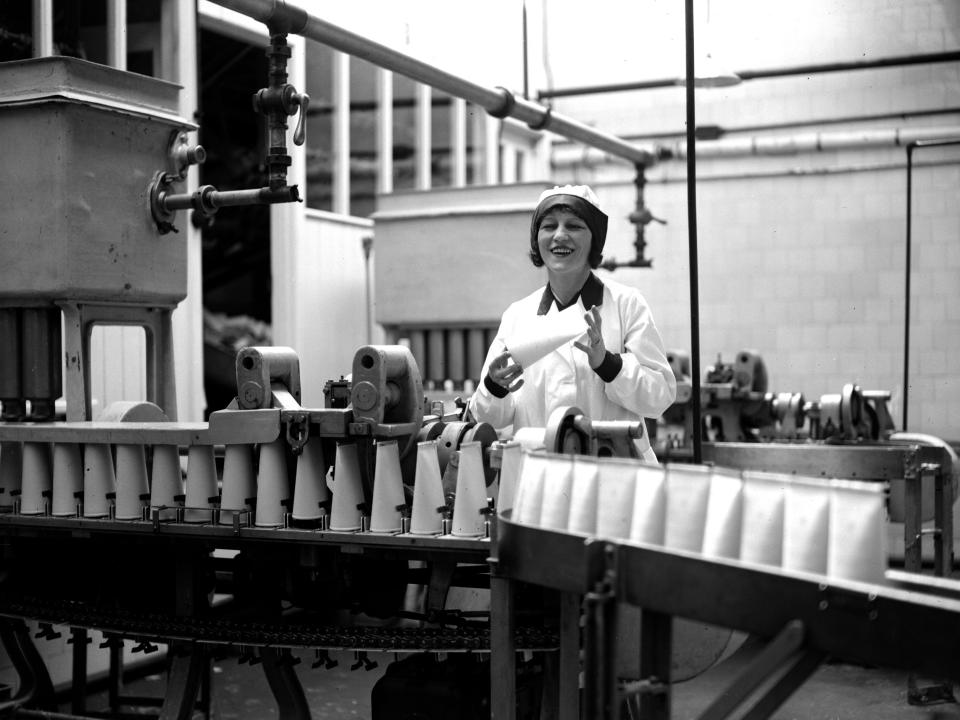
Women began doing all sorts of jobs in the 1920s, per CCSU. They ran drill presses, did welding, operated cranes, used screw machines, and many other jobs that required heavy machinery.
Factory work was often long and tedious, requiring workers to do the same task all day, every day.

These women spent their days icing cookies at a factory in Liverpool, England.
Life on the farm was difficult for women, too.

In the 1920s, farms still didn't have electricity, plumbing, or heating and cooling, PBS reported. Despite the hardship, families in the Midwest focused on growing fruits and vegetables, while also producing eggs and meat.
This young woman in 1925 was operating a plow.

Farmers across the US struggled to make a profit throughout the 1920s as a result of overproduction and the subsequent drop in prices. With farmers unable to pay their debts, the Library of Congress reported that "between 1920 and 1932, one in four farms was sold to meet financial obligations."
Though slavery was abolished in 1865, Black women were still not afforded many of the same opportunities as white women.
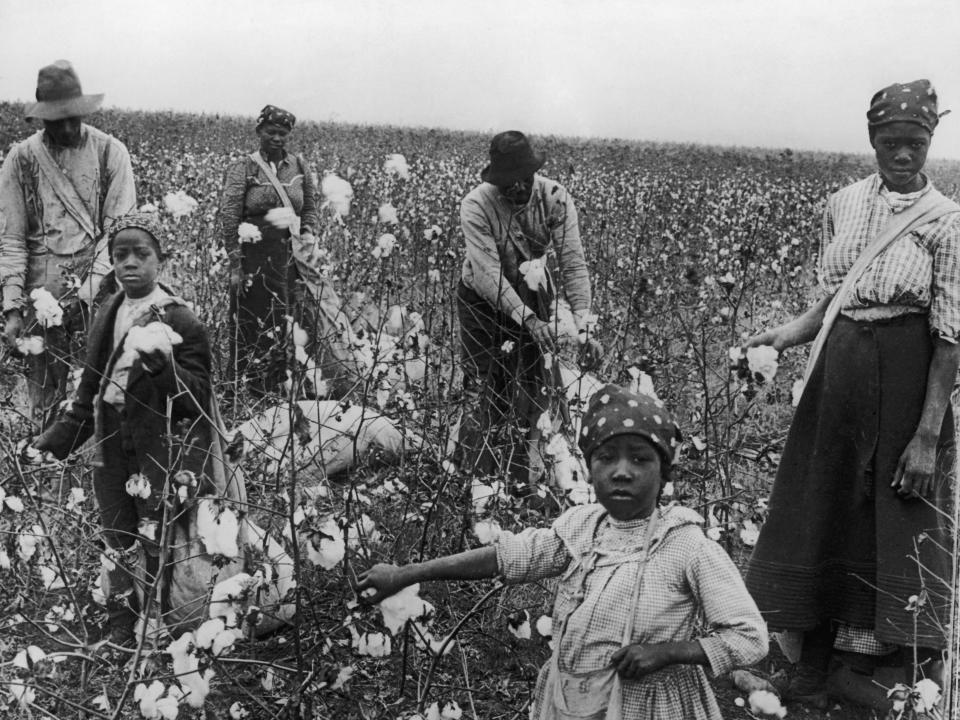
As pictured above, many Black women in the South worked picking cotton to make ends meet.
A study indicated that two in three Black women from Black landowning families were involved in cotton farming in the 1920s.
The 1920s were a part of the segregation era in the South, in which Black women faced discrimination at work.

Black women were often barred from working in the same jobs as white women, like these construction workers pictured above. Segregation, both de jure and de facto, continued to exist into the 1960s and we can still see its legacies today.
Other working women included the Black Cross Nurses, established in 1920 and modeled after the Red Cross.

Henrietta Vinton Davis established the Black Cross Nurses in 1920 as a part of the Universal Negro Improvement Association and African Communities League. They offered health services and hygiene education to Black members of the community.
At the time, hardly any nursing programs would admit people of African descent and many health facilities provided unequal care to Black patrons, an issue that persists today especially in maternal health care. The Black Cross Nurses became key figures for civil rights.
Black women also faced racist acts of violence, like during the Tulsa Race Massacre in 1921.

In early 1921, the Greenwood District of Tulsa, Oklahoma was home to an affluent Black community who ran newspapers, churches, and scores of businesses and was known as the "Black Wall Street." By June 1, it would largely be burned to the ground in "the single worst incident of racial violence in American history," per the Oklahoma Historical Society.
Although the exact details remain lost to history, it's believed that on May 30, 1921, a Black man named Dick Rowland stepped on the foot of a white woman named Sarah Page when he entered the elevator of the Drexel Building. Page screamed and the town quickly exaggerated their tellings of the incident, leading to an attempted lynching of Rowland that night.
An altercation at the courthouse led the unsuccessful, angry members of the white mob to riot and attack Black people and their businesses. The Tulsa Historical Society and Museum reported that 35 city blocks were burned down in the attacks, possibly killing as many as 300 people and injuring more than 800.
In Japan, women were also working in factories. Here, they're seen protesting unfair working conditions.

In 1918 and 1919, there was a surge in protests at textile mills in Japan, where women demanded shorter working hours and wage increases. They were receiving far less money than their male counterparts, and they were doing important work like constructing war uniforms, for which there was huge demand at the time.
Women began to take cooking positions outside the home.

Though women were perceived as cooks, the role was relegated to the home, rather than a restaurant. However, the 1920s began to see women studying to be professional chefs.
Many women worked as homemakers. Their lives were slowly made easier by new technologies, like the dishwasher.

Though the first practical dishwasher was invented in 1886 by Josephine Cochrane, The Independent reported, they did not become popular in homes until the 1920s.
The introduction of permanent plumbing in homes made machines like dishwashers possible, though they were expensive and only found in the homes of wealthy families.
Driving afforded women a freedom and mobility they hadn't before experienced.

In 1909, 22-year-old Alice Ramsey (not pictured) became the first woman to drive across the continental United States, in part to prove that women were capable behind the wheel, the Smithsonian reported.
Though they worked hard, women 100 years ago also knew how to have fun.

These women are seen cooling down on a block of ice on a hot summer day. Bikinis were not yet popularized, so these outfits were likely the most skin 1920s women would be seen showing.
Dancing was a popular pastime for adults and children alike.

The 1920s was the first decade to see free and unbridled movement on many dance floors. Dances called the Charleston, the Black Bottom, and the shimmy were all highly popular.
Women who went dancing at late-night parties were referred to as "good time girls."
One of the most famous women 100 years ago was Josephine Baker, who was known for her singing and dancing.
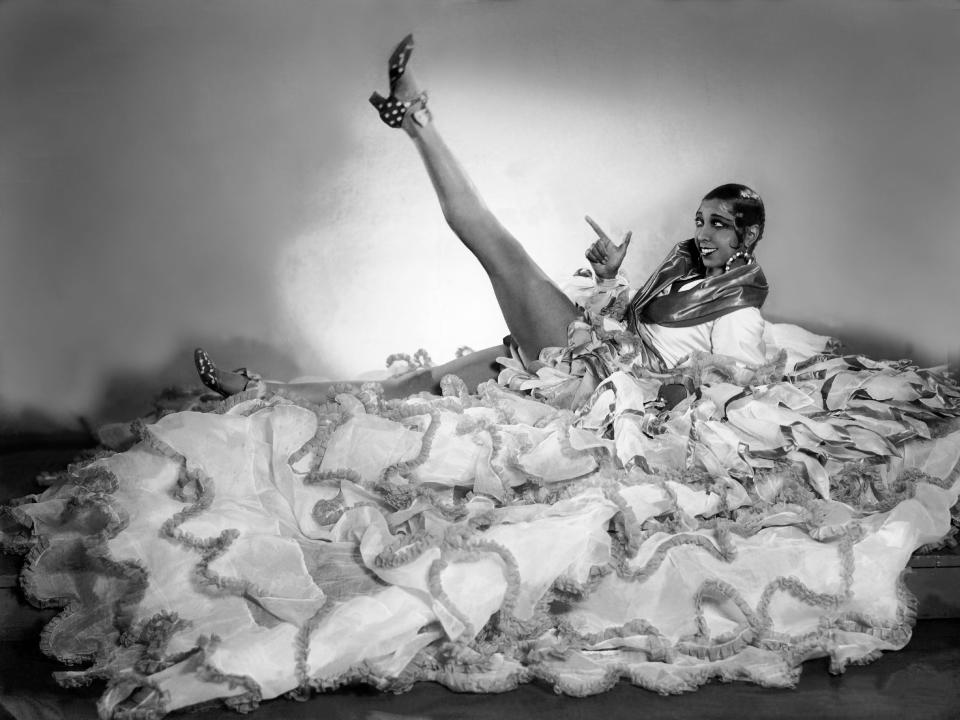
The National Women's History Museum reported that Baker first became known in the US for her Vaudeville shows, but she really became a star when she moved to Paris. Baker's shows became famous for her African-inspired dance moves, her singing, and her elaborate costumes.
She was a key figure in the French Resistance during World War II as well as an activist for civil rights in the US. Although she died in 1975, Baker became the first Black woman to be buried in France's Panthéon, the country's highest honor, in 2021.
Another star of the decade was actress Mary Pickford, who led the silent-film era.
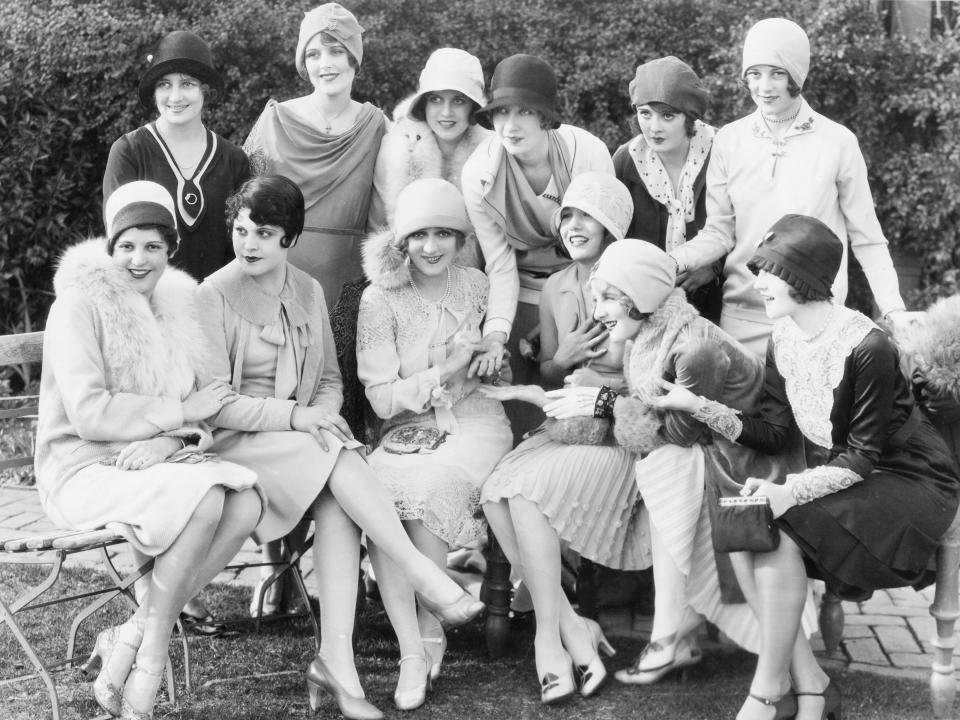
The Oscars described Pickford as the definition of a "movie star," known best for her work throughout the silent film era with movies like "Rebecca of Sunnybrook Farm," "Stella Maris," "My Best Girl," and "Sparrows."
She was a founding member of the Academy of Motion Picture Arts and Sciences and in 1930 was the recipient of the second Oscar for best actress.
Sporting outfits were definitely different from what we know today.

The first swimsuits were actually made of wool, as designers believed it would help keep swimmers warm in cold waters.
Their swimsuits were different, too, as seen worn by these women in the 1924 Miss Coney Island pageant.

According to the company, Jantzen was the first to create swimsuits out of a stretchy jersey material.
Not only were their swimsuits different, so were views on tanning.

It wasn't until the 1920s that tanning became popular. Fashion designer Coco Chanel reportedly created the trend with a photo showing her stepping off a cruise ship in Cannes after too much sun. The image was in every paper and created a new standard of beauty.
Exercise was often a group event.

Stretching, rather than vigorous exercise, was viewed as the ideal method for women's bodies and health. Stationary bikes and rowing machines were also invented in the 1920s, along with the Vibro-Slim, a machine with a vibrating belt that was meant to reduce belly fat.
They also participated in exercise fads.

Before the mechanical bull became a fun attraction at a bar, it was invented to train rodeo competitors. In the 1920s, it became a popular exercise fad after women realized it could help tone their abs and strengthen their core.
They also used very simple rowing machines to work out.

Here, movie star Helen Chadwick uses the rowing machine to stay fit.
Tennis was a popular sport for women, too.

Wimbledon opened its famous courts to women in 1884. Here, American Helen Willis competes against Brit Kitty McKane in the 1924 Ladies' Singles Final.
Baseball was a popular sport for men and women. Pictured is Barnard College's baseball team practicing in 1925.

With New York Yankees stars like Babe Ruth and Lou Gehrig, it's no surprise that the sport attracted the attention of both men and women in the city.
Women would go on to make their mark in baseball in the following decades, with 60 playing in the All-American Girls Professional Baseball League during World War II, the National Baseball Hall of Fame reported.
There were female Olympians 100 years ago, but their uniforms looked quite different from the sleek outfits worn by today's athletes.
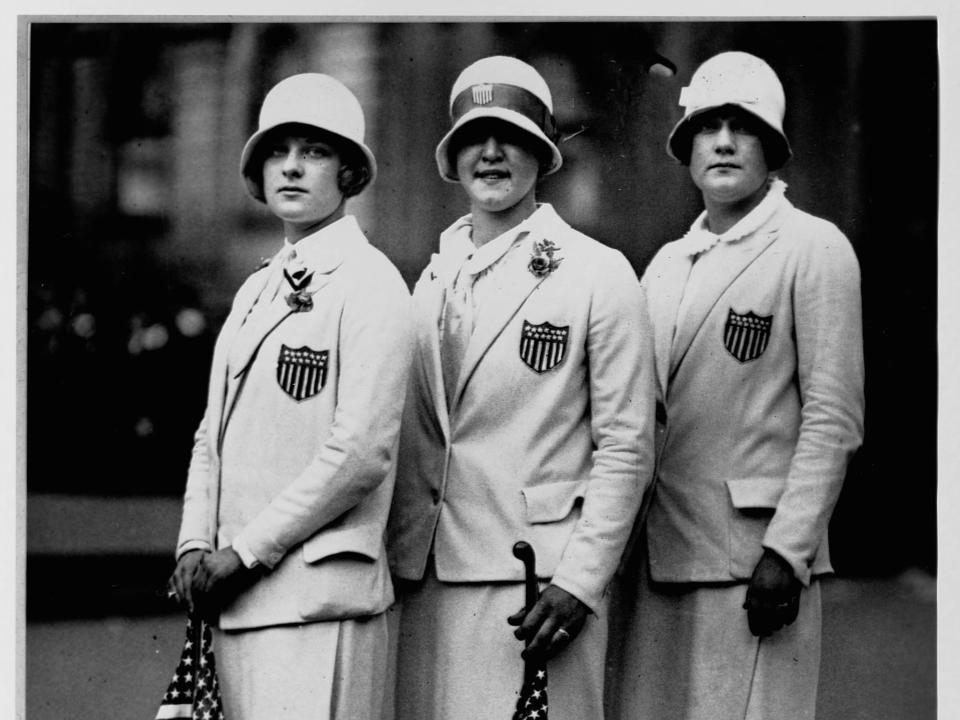
Women's swimming was the first aerobic sport accepted by the International Olympic Committee, according to Team USA, and was first introduced at the 1912 Olympics in Stockholm. Pictured are US Olympic swimmers Aileen Riggin, Gertrude Ederle, and Helen Wainwright.
The Harlem Renaissance was a major period for Black literature, art, and music. Poet and critic Jessie R. Fauset was a key figure.
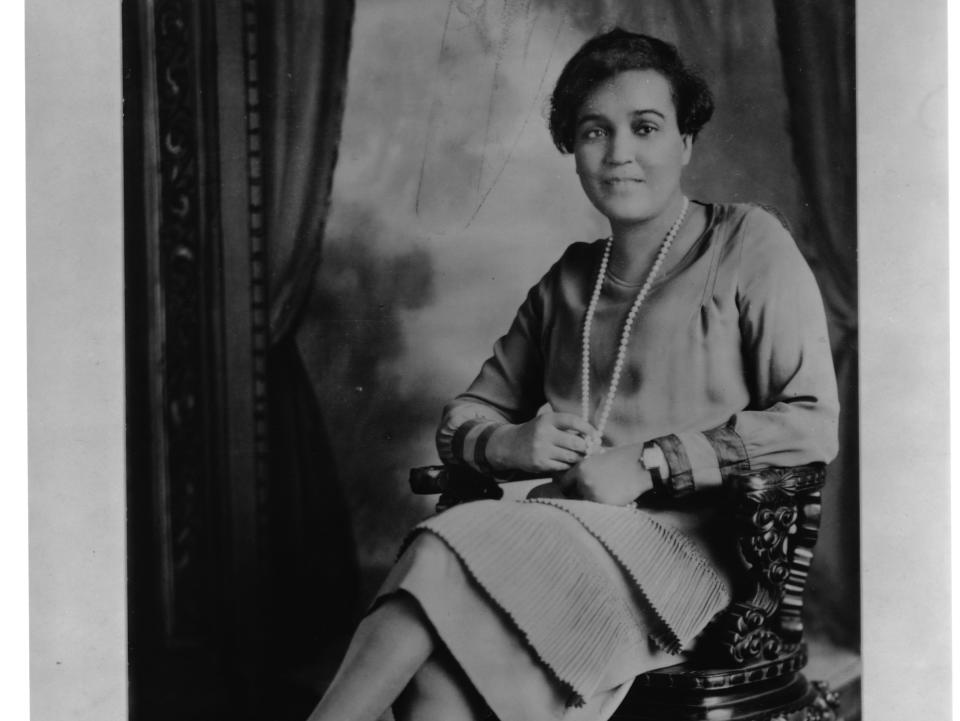
After graduating from Cornell University with a degree in classical languages in 1905, Fauset spent time as a teacher before turning to writing in 1912.
Poets.org reported that she wrote poems, essays, and reviews for the NAACP's magazine, The Crisis, for seven years before becoming literary editor. During the 1920s, Fauset introduced the world to legendary writers like Langston Hughes, Claude McKay, and Anne Spencer while also publishing her own novels "There Is Confusion" and "Plum Bum."
Jazz music was popularized during the 1920s.

Lil Hardin Armstrong (pictured above) was just one of many women who would influence jazz music from the 1920s on. The New York Times reported that Hardin helped her future husband Louis Armstrong become band leader of King Oliver's Creole Jazz Band; she also served as his first manager and was a pianist and frequent co-composer.
"Empress of the Blues" Bessie Smith was a popular blues and jazz singer during the Harlem Renaissance.
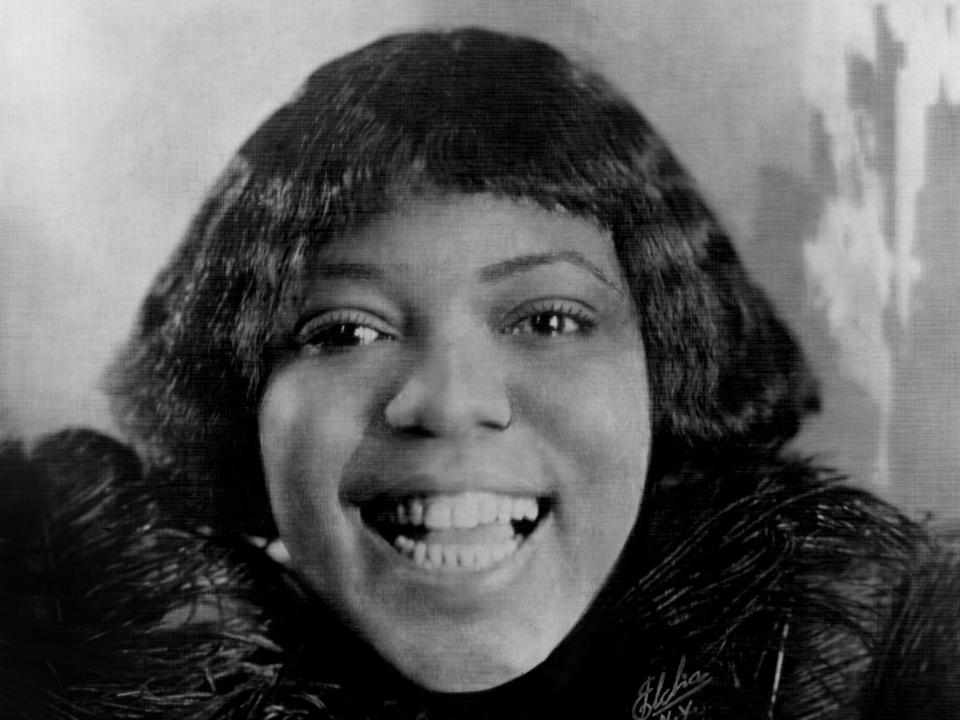
The National Museum of African American History and Culture reported that Smith was mentored by "Mother of the Blues," Ma Rainey, who taught her how to navigate the music industry and capture an audience's attention. Smith signed a record deal with Columbia Records in 1923, releasing "Down-hearted Blues," a major hit.
Smith became the highest paid Black entertainer of the time and she recorded with iconic jazz musicians like Sidney Bechet and Louis Armstrong.
The Great Depression caused Smith's career to be cut short, and she later died from injuries sustained in a car accident in 1937.
Beauty standards can be seen through women's popular fashion at the time.

1920s female fashion was characterized by loose fabrics, lots of fringe, and glamorous jewelry and details. Hair cut short into a bob was also popular, as seen in the woman above.
Large brimmed hats with fringe and pearl necklaces were popular accessories among the wealthy.

Long, straight skirts with low waists were the dominant style.
The loose skirts and dresses were very different from the constricting clothes of the previous decades, and were far more movable and comfortable.
Flappers and showgirls show another facet of 1920s female beauty.

Art Deco style and Gatsby-esque outfits were also popular for 1920s women. Showgirls and Vaudeville performers would dress up in decadent velvet and satin dresses, with pearl and gem details throughout.
But women also got dressed up for fun, as seen through these women and their Halloween costumes.

1920s Halloween costumes were more about inspiring fear than dressing up as celebrities and TV characters. Clowns, ghosts, and witches were all highly popular costume choices back then.
Zelda Fitzgerald, wife of author F. Scott Fitzgerald, was a popular flapper.

Zelda was a major influence on Scott's writing, with the couple drawing lots of public attention throughout the 1920s. A writer and painter, too, Zelda's first and only novel, "Save Me the Waltz," was released in 1932.
Unfortunately, her life was largely cut short after being diagnosed with schizophrenia (now understood as bipolar disorder) and committed to sanatoriums. She died at age 47.
Fur coats and soft, form-fitting hats were also in style.

Though they were popularized 100 years ago, there are plenty of vintage outfits like these that are still trendy today.
Elizabeth Arden's products became a key part of 1920s beauty standards.

Elizabeth Arden helped popularize makeup for the masses in the early 1920s. Once believed to be exclusively for movie stars, Arden started a marketing campaign that helped create the idea that wearing makeup was "appropriate and even proper," per the Library of Congress.
By 1925, Arden had salons open around the world in cities like New York, Paris, and London.
Dark red lips with an exaggerated cupid's bow was a popular beauty trend of the time.
Wedding dresses from the 1920s were inspired by the modern, shorter style.

Wedding dresses followed the 1920s style: They were short, like the flapper dresses, with form-fitting bucket hats.
These brides and grooms gathered to get married on Christmas Day, which used to be a tradition.

It used to be popular to have weddings on Christmas Day in Britain, as churches would hold nuptials for brides and grooms every year. It was often the only time that working class couples could get married, as they'd have Christmas and Boxing Day off.
Another key part of American society was the impact of immigration. Shown below are Japanese "picture brides" who immigrated to the US in 1920 to marry American men.

The 1907 Gentlemen's Agreement limited immigration from Japan to the US, but it had an exception that Japanese wives of current American residents could enter the country. This exception started a system where men would choose Japanese wives based on their pictures alone.
These "picture brides" immigrated between 1907 and 1924, and faced many hardships. Many of their husbands were older and poorer than the women anticipated, and the wives faced spousal abuse in addition to societal racism fueled by anti-Asian sentiments, Women & the American Story reported.
The 1924 Immigration Act ended the practice, as it barred any immigrant "who by virtue of race or nationality was ineligible for citizenship," per the US State Department. People of Asian descent were denied full citizenship based on laws dating from 1790 and 1870.
Immigration policies of the 1920s heavily favored migrants from northern Europe.

In 2015, the Pew Research Center reported that in the 1920s, the US government enacted quotas reducing the number of immigrants granted entry. The first quota on immigration was passed in 1921 and allowed only 350,000 total immigrants; this was decreased to 165,000 in 1924. Nationality quotas were also imposed on Europeans.
The quotas were largely fueled by xenophobic fears toward Southern and Eastern European migrants, who'd come to the US during the second wave of migration from 1890-1919.
Meanwhile, immigration from most countries in Asia was already prohibited.
Prior to the passage of the Immigration and Nationality Act, passed in 1965, 70% of the quota visas available belonged to residents of Ireland, Germany, and the UK, reported the Pew Research Center.
Indigenous women throughout the US were subject to racist violence and prejudicial laws.

Women of the Osage Nation were among those targeted and killed by William K. Hale and his accomplices in the early 1920s.
The Osage Nation reported that Hale and his associates are believed to be connected to more than 20 killings, though there were more than 60 murders total from 1920 to 1925. The killings were motivated by Hale's desire to inherit money held by the Osage people from the oil boom.
The tragedy was the subject of Martin Scorsese's Oscar-nominated film "Killers of the Flower Moon."
Read the original article on Business Insider
